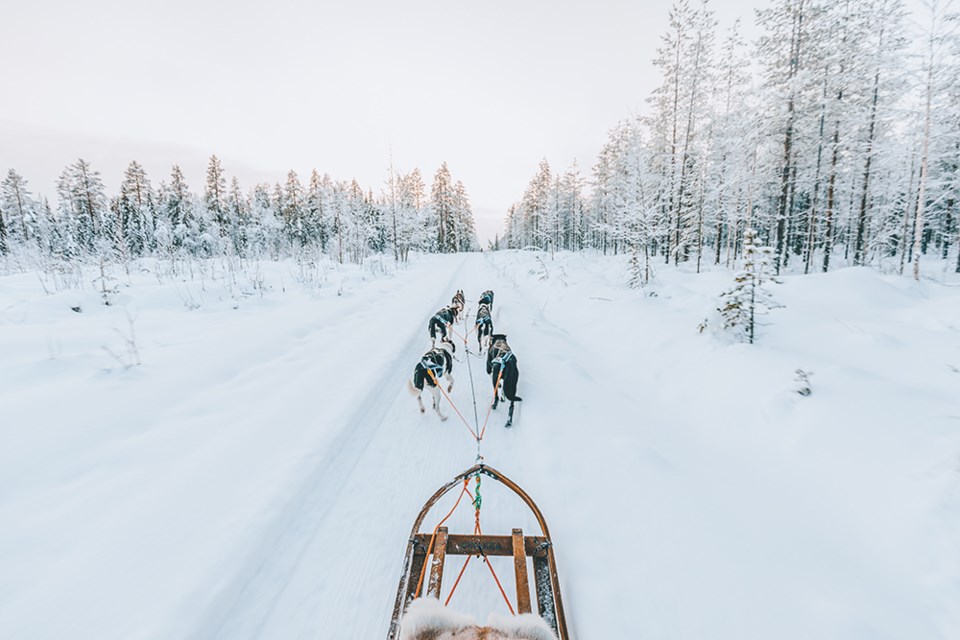Last week, the British Columbia Society for the Prevention of Cruelty to Animals (BC SPCA) seized 40 animals from a West Kootenay sled dog operation.
According to the BC SPCA, conditions at the facility violated some parts of B.C.’s Sled Dog Code of Practice, a set of industry standards that were implemented in 2012.
The seizure reportedly came in response to public complaints about the dogs’ care. It came after SPCA officers told the facility operator what changes needed to be made in order to comply, and gave him an opportunity to make them, only for him to refuse.
The owner, meanwhile, publicly disputed any claims that the dogs in his care were in distress or poorly housed.
It’s in this context that the Vancouver Humane Society (VHS) on Friday, Feb. 19 released a video of a Whistler dog sled kennel that it claimed showed dogs in distress and tethered to poles, while admitting nothing in the drone footage—taken by “animal advocates” and provided to the society—is illegal.
In what can easily be construed as a decision to grab hold of the momentum created by headlines of the West Kootenay seizure, the VHS released the footage alongside an announcement launching a campaign aimed at encouraging the province to update its Sled Dog Standards of Care Regulation to conform to the Canadian Veterinary Medical Association’s (CVMA) Code of Practice for Canadian Kennel Operations. Under CVMA’s practices, tethering is banned.
Pique published a story about the video, the campaign, and the Whistler kennel owner’s denial of the accusations, that, to put it mildly, ignited a firestorm of criticism in our Facebook comments section, mostly aimed at us for covering the story in the first place. The vast majority of comments defended the owner of the kennel, who, by all accounts, cares for her dogs deeply, treats them better than industry standards call for, runs a completely above-board operation and successfully re-homes retired sled dogs as companion animals.
I agree with some of the criticism pointed toward the VHS in that singling out one business to frame as an example of what it says are industry-wide shortcomings is wrong. Just like using drones to “secretly” film a facility that welcomes visitors for kennel tours was not exactly the right way to go about accomplishing its goal.
But in the same breath, I also find common ground with the VHS in thinking that broaching the conversation about whether we can improve acceptable standards of care is the right thing to do, as is holding the people who care for animals to the highest possible standard.
(Just like I think this publication’s decision to report on the video and give said business owner a platform to share her side of story is also the right thing to do, but a discussion about what truly constitutes “weak journalism” is a column for another day.)
I’ll be the first to admit I’m not a dog sled industry expert or veterinarian. But as your regular ol’ dog-obsessed human, I believe that we should always be considering and re-considering what’s best for animals as we learn more. I strongly believe, as I hope most others do, that no healthy animal should be euthanized simply because they’re no longer “useful.”
But this latest conversation about the sled dog industry also opened up a wider internal debate that for me, is anything but black and white. Where do I draw my own personal line in the sand when it comes to using animals, particularly when it comes to entertainment or for profit?
My first horseback-riding lesson was, without exaggeration, the happiest day of my childhood. I was completely incapable of wiping the grin off my face once I was perched on a sweet pinto pony named Sammy.
Technically, that’s using an animal for entertainment, and for profit. Looking back, I do question how enjoyable carrying around a bunch of inexperienced, wriggly seven-year-olds is even for the most docile school horse. But those lessons are also where I learned to respect animals, to care for them, and that relationships between animals and humans should be a two-way street: you can ask a horse to change its gait, but you should never force an animal to do something it doesn’t want to do.
Horse racing on the other hand? Makes me more than a little uncomfortable. Petting sedated tigers? Absolutely not.
It sometimes seems too easy for society to forget that animals are living, breathing creatures with needs and emotions, which aren’t always capable of verbalizing those needs and standing up for themselves in the same way humans can.
The onus is on our lawmakers to make the rules that ensure animals are protected, but it’s on all of us to work together to take care of them and make sure those rules are still providing the best protection possible.




